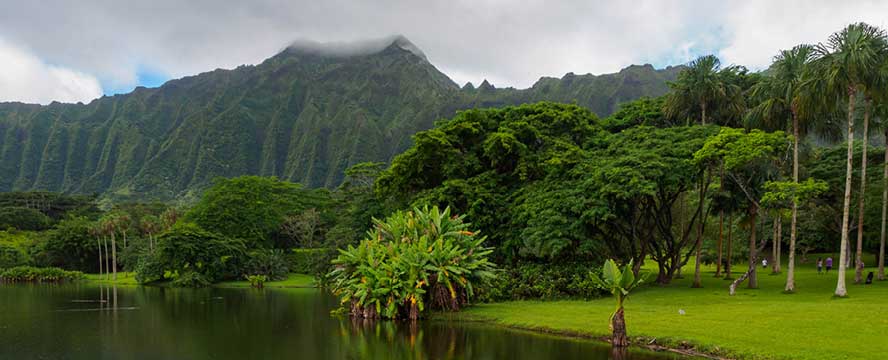
When you think about Hawaiʻi, the first image that springs to your mind might be of a sunset on a beautiful beach with a tropical drink in your hand. And while those things are certainly part of the experience, the cultural history and traditions of Hawaiʻi are incredibly vast and diverse.
While we can’t cover everything in this one blog post, we’ve collected some highlights that will strengthen your appreciation and experience at CHEST 2023 this October.
The meaning of aloha
The etymology of aloha is derived from Proto Polynesia and literally translates as “the presence of breath,” with “Alo” meaning “presence” and “Hā” meaning “breath.” However, the meaning of aloha goes far beyond that translation.
While aloha is often used as a simple greeting, it carries with it the spirit of affection, compassion for each other, love, and the bond that holds people together. Queen Liliʻuokalani famously remarked, “Aloha is to learn what is not said, to see what cannot be seen, and to know the unknowable.”
The “aloha spirit” permeates the islands and extends throughout all interactions and relationships. Offering and receiving a lei is an invitation to join in a “circle of unending aloha,” as indicated by the shape of the lei.i During your time in Hawaiʻi, let the spirit of aloha motivate how you engage with each other and the land.
Aloha ʻāina
Since you know what aloha means, aloha ʻāina is a deep embodiment of respect for the land. Stewardship and caring for the land is a core value of Hawaiian culture, which also recognizes and honors the interconnectedness between humans and nonhuman nature.
Extending an ethic of care toward ʻāina means respecting ecosystems by not disturbing biodiversity, working to conserve natural resources, and investing in restorative usage of land.ii
ʻOhana
The word ʻohana comes from the ʻoha (or corm) of the taro plant and is a term that broadly refers to kinship structures. The taro plant is often referred to as the “staff of life” for Hawaiians since all parts of the plant are fully utilized as food, as medicine, and for spiritual offerings.iii Additionally, taro emphasizes the link between Hawaiians and the ʻaina because all the offshoots of the taro corm are related to the original root, just as all Hawaiians are related to that same ʻoha and their ʻohana.
ʻOhana, then, does not just refer to immediate biological family but includes a vast array of relations—ancestral as well as contemporary. Additionally, ʻohana can refer to a group of friends, colleagues, and broader community members. Because of the interconnectedness of ʻohana and ʻāina, a successful and thriving ʻohana is seen as critical to the health of broader communities and ʻāina.iv Learn more about ʻoha.
Mahalo
Both aloha and mahalo are words you will probably hear frequently while in Hawaiʻi. Mahalo is a very common way to express gratitude and say “thank you,” but it holds much deeper cultural meaning and significance. Mahalo not only is used to punctuate interactions but also is a guiding value and reminder to live in a state of constant thankfulness for life’s abundant blessings.v An attitude of mahalo is one that reflects gratitude in all parts of life and demonstrates that gratitude through acts of service to others and to the ʻāina.
During your time in Hawaiʻi, you may notice that things move at a more relaxed pace, and that relaxation extends to your wardrobe! We encourage you to leave your suits and business attire at home in favor of more colorful, less formal outfits.
We hope this change of pace will encourage you to recalibrate your own sense of time and urgency in order to fully embrace and enjoy the experience. Savor time spent with your CHEST ʻohana by going for walks together, trying new restaurants, or just sitting outside together. Weʻll see you there!
i Ching J. Aloha connection — island tidbits. American Psychological Association. 2013.
https://www.apa.org/pi/oema/resources/communique/2013/05/island-tidbits#:~:text=Queen%20Lili%60uokalani%20stated%2C%20%E2%80%9C,where%20the%20Aloha%20Spirit%20prevails
ii Boggs ST. Meaning of ʻaina in Hawaiian tradition. University of Hawaii. 1977.
https://scholarspace.manoa.hawaii.edu/items/1f646f35-494e-499f-bbd8-3159c55aa0ad
iii Lindo CK. The spirit of ʻohana and the Polynesian voyagers. Polynesian Voyaging Society. 1980. https://archive.hokulea.com/ike/moolelo/ohana.html
iv McGregor DP, Morelli PT, Matsuoka JK, Rodenhurst R, Kong N, Spencer MS. An ecological model of native Hawaiian well-being. Pacific Health Dialog. 2003;10(2). http://pacifichealthdialog.org.fj/Volume2010/No220Pacific20Public20Health201/Viewpoints20and20Perpectives/An20Ecological20Model20for20Native20Hawaiian20Well20Being.pdf
v Asetre JP. Mahalo-ve: one love, one gratitude. Polynesian Cultural Center. 2022.
https://polynesia.com/blog/mahalo-ve-one-love-one-gratitude